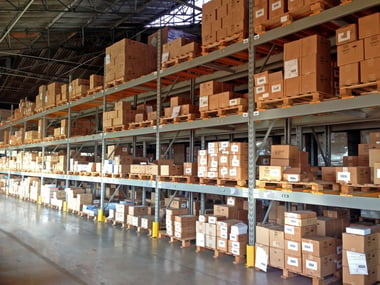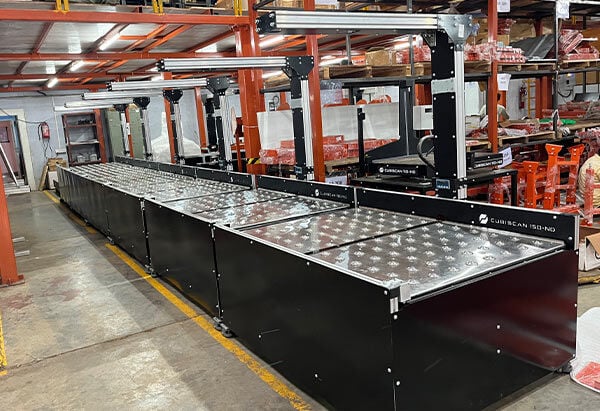AI In Parcel & Freight Part 2: Delivery Routes & Resource Management
Supply chain management relies on synchronization. Disruption in the chain costs money and goodwill with customers and suppliers. How can AI enhance...

On-demand delivery has changed how we shop and how we deliver goods. Flexible distribution options have become a necessity for both large and small retail businesses in meeting the cultivated consumer demand. Consumer buying behavior, in our post-Amazon world, sees people making purchasing decisions based heavily on how fast they can get their stuff. How can smaller retailers keep up with Walmart, Amazon, and other large enterprises that have warehouses across the country?
 Dynamic warehousing is an on-demand, pay-for-use model whereby the shipper has access to a network of warehouses. Fluctuating volumes and configurations at different locations in that network are accommodated for. This access usually includes local warehouse labor to process and receive shipments at an additional per-unit charge.
Dynamic warehousing is an on-demand, pay-for-use model whereby the shipper has access to a network of warehouses. Fluctuating volumes and configurations at different locations in that network are accommodated for. This access usually includes local warehouse labor to process and receive shipments at an additional per-unit charge.
Retailers can use dynamic, on-demand warehousing as their entire shipping strategy or to supplement their existing strategy.
The enables them to compete better as they:
1) Do not have to sign up for traditional lengthy warehouse contracts
2) Can strategically spread inventory around
3) Have the flexibility to open and close operations with the tide of demand
 Pop-up warehouses employ flexibility as well but are entirely temporary. Pop-up warehouses are much like the Spirit Halloween stores that pop up a few months of the year to capture seasonal demand.
Pop-up warehouses employ flexibility as well but are entirely temporary. Pop-up warehouses are much like the Spirit Halloween stores that pop up a few months of the year to capture seasonal demand.
Pop-up warehouses save money for both consumers and retailers. Bulk delivery to a few temporary warehouses helps cut down on final-mile delivery, which, according to BI Intelligence, accounts for roughly 53% of shipping costs.
Creative spaces are already being used for pop-up warehousing. Empty retail space in strip malls and shopping centers are a terrific option in securing short-term leases for peak demand seasons.
Download the Carrier Rate Shopping Guide
Pop-up warehouses require further ingenuity on any labor required for processing orders, however. Business is already tapping into creative customer pickup options to solve for this, such as with Amazon’s locker concept. Amazon Locker allows customers to pick up and return packages to a local locker, cutting down on final delivery charges.
With the holidays right around the corner (which is insane by the way), retailers need all the tools they can get to make shipping easier and faster! With the right tools, retailers can save on hiring more seasonal processors by using tools that shorten the shipping process. A Transportation Management System (TMS), for example, can quickly process everything from rates quoting and labels/BOL printing to tracking and customer automation tools.
.jpg?width=645&name=Reallocate%20Resources%20to%20Grow_Option%202%20(2).jpg)
Reach out to our team and get a free demo of how our tools can save valuable time and money while exceeding your customers’ delivery expectations!

Supply chain management relies on synchronization. Disruption in the chain costs money and goodwill with customers and suppliers. How can AI enhance...

Most of us are well aware of the growing trend of two-day, overnight, and same day delivery options for online shoppers. Amazon has fueled much of...

In the Logistics business, precision is everything. From warehouses to freight handlers, companies need efficient ways to optimize space, reduce...